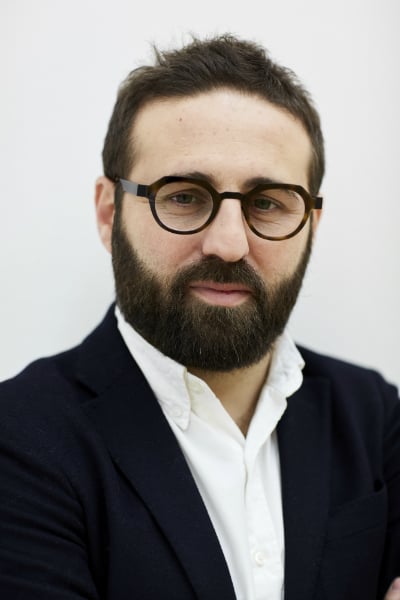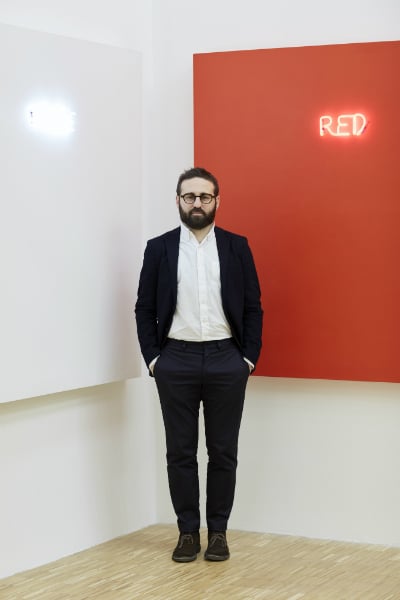Art Fairs
Miart Director Says Small Fairs Are an Antidote to a System in Crisis
In a landscape with too many fairs, the small ones might win out.

Photo: Marco De Scalzi, courtesy MiArt
In a landscape with too many fairs, the small ones might win out.

Hili Perlson

The 21st edition of the Milan International Fair of Modern and Contemporary Art, or Miart, opens in Italy on April 7, bringing 154 international exhibitors from 16 countries to the financial capital of Italy. With a strong focus on modern and contemporary art, the fair is also known for its unique design section—a mix of genres that wouldn’t be easy to stage in other cities, but feels perfectly natural in Milan.
In 2012, Vincenzo de Bellis took the reins as the Miart’s artistic director, and has managed to transform it from a fair for local exhibitors mostly dealing in the secondary market, to a vibrant and exciting fair on the European agenda, attracting international exhibitors and European collectors to Milan for what has become a week of openings and events.
Last week, de Bellis was named visual art curator at the Walker Art Center, alongside Adrienne Edwards. artnet News caught up with the dynamic Italian fair director and curator before the fair’s 2016 edition—after which de Bellis will relocate from Milan to Minneapolis—to discuss the changing business of managing art fairs, the importance of working together with other institutions, and the relevance of smaller art fairs for exhibiting galleries.
This is your fourth edition as director, and the fair has changed drastically under your leadership. Could you tell me about your strategies for Miart?
Before I became director, the fair was very local, and the 2012 edition included 90 galleries, 85 of which were Italian, and most of them dealing in the secondary market. I don’t come from marketing but from a museum background, and I am a writer myself, and one of the reasons why we have a lot of projects, and the fair has a very strong curatorial take is because of that.
In my first year as director I introduced the section THENnow; it hosts nine booths and each presents a pairing between younger and an older artist, represented by two different galleries. This year we added a new section, too, called DECADES, which looks at the 20th century with each of the galleries in this section representing a specific decade. Sperone Westwater gallery for example will focus on abstract Italian paintings from the 30s, and Blain Southern, who is participating for the first time, will represent the 50s British sculptor Lynn Chadwick. So the fair has a total of five sections, three of which are curatorially driven.
How do these curated sections help to attract new exhibitors?
We always have to find a reason for the people to come. Milan is neither Basel, nor London, nor is it New York in terms of market. A smaller fair should always think of ways to involve galleries because it’s not only about giving them context to sell works. Selling can happen anywhere. Milan offers a very specific historical context in which the galleries can present things that are harder to show elsewhere. Sadie Coles HQ can bring an artist like Paloma Varga Weisz here. It probably wouldn’t fit in the gallery’s program elsewhere, but in Milan it works very well as you also have works from the 50s and 60s. So even very established galleries in the field of contemporary art can show the older artists in their program, and this gives room for artists who don’t usually get shown.
Is this how you would define the local audience’s tastes?
We have a strong Milanese audience and the proximity to Switzerland brings a lot of Swiss collectors too. It’s an audience who’s usually very knowledgable about art. After all, Milan is the city of Lucio Fontana and Piero Manzoni, so the people who grew up here, grew up with these two very strong figures of conceptual art. People have pretty high standards in that respect. Of course it’s also the city where the best Italian design from the 50s and 60s was produced, so collectors here are really surrounded by beauty. The houses of the high bourgeoisie in Milan are very well curated, with design objects by Franco Albini, Achille Castiglioni, Giò Ponti, and all these great masters, who were all very connected to the art world.
It’s not very common for a contemporary art fair to include design, like Miart does. How does it fit together in your opinion?
To me it’s a very basic thing—if the MoMA, an icon for modern and contemporary art—has a department for design, I think we should be very honest in saying there’s a lot of overlap between the two fields, especially in a city like Milan. We can name artists who are influenced by design by Ponti, Albini, or Ettore Sottsass, so I think it’s important to address. And also in terms of market, there are a lot of collectors who are buying both art and design. But ultimately, it is dictated by the context in which we work—I wouldn’t do it everywhere—but I want to underline the best things about Milan, and design is certainly one of them.

Vincenzo de Bellis.
Photo: Marco De Scalzi, courtesy MiArt.
The company that manages Basel art fairs has recently announced its plans to get involved with smaller, regional fairs. TEFAF is opening a New York edition. On the other hand, FIAC and Paris Photo have canceled their LA offshoots, with FIAC subsequently shutting down Officielle as well. What’s your take on these changes in the art fair system?
This applies specifically to regions where the market could grow stronger, which doesn’t happen in Europe. Art Basel, Frieze, or FIAC are trying to do fairs in other regions, not in Europe. And the reason is that the European market is suffering. In terms of new buyers, the expansion of the market is happening elsewhere, in Asia, Africa, and South America. Those huge enterprises tend to achieve what Basel did in Miami 15 years ago. At the same time, the art market and the fair system is getting into a huge crisis. There are simply too many fairs. But I personally think that the fairs that will suffer the most are the big ones, excluding Basel. They have huge expenses, and they charge galleries a lot to participate. And if the galleries don’t sell, they’re broke. And without galleries who can afford them, there will be no fairs.
Talking to galleries, they are experiencing a much smaller market lately. It’s not a bad thing necessarily: We’ve expected this, the market can’t grow forever. I think the smaller and so-called local fairs like in Milan, Madrid, and Cologne can survive, because they offer continuity in what they’ve been doing over the past 40 years.
People who come to Miart don’t come because it’s a huge market place. They come for other reasons, like giving visibility to specific artists for example. I truly believe the smaller and less expensive, the better. This is what exhibitors keep telling me. Of course the less you charge as a fair, the less you can deliver, and we have to be extremely honest with our clients, we don’t offer a huge market place, we offer ideas which they can find interesting to come and participate in, for a reasonable investment.
And yet, with the number of private foundations in Italy changing the local landscape, and last year’s opening of Prada Foundation’s permanent venue in Milan, it seems like there is still more place for growth.
The foundations really affected the fair in a very positive way. And there is absolutely room for more. There is appetite for art in the city. There are no art institutions in Milan, only galleries, and that was the case for about 40 years. And then, the private foundations started opening: Prada has played a key role in the city with a temporary space for years before they opened the permanent foundation; the same goes for Trussardi who played the most important role in pushing others to invest in and promote culture in Milan. And then we got the Pirelli foundation, with HangarBicocca a few years ago, and these three major private foundation are our museums. This has been a huge support for the fair.
The fair also fostered a system where people can take advantage of working together. Milan has always been a city where people do their business in private, secretly, and never in contact with others. But there’s been a change in the generation who took the leadership, with Andrea Lissoni becoming curator at HangarBicocca, me being appointed as director of Miart, Eduardo Bonaspetti from Mousse Magazine becoming curator at the Triennale, and Massimilano Gioni being at the helm at the Trussardi foundation. All of these people are friends, and they collaborate and talk to each other without filters. We had a phone call during which we decided to work together and that made a huge difference on the scene.
That’s very fortunate, for the art fair but also for Milan in general.
The thing is that we were desperate! There was a need for change and we were lucky enough to be in the right places at the same time to facilitate that. So when I was appointed director, I was able to call Massimiliano and say, listen why don’t we work together? And we still do! This year we’re holding a Sarah Lucas show in collaboration between Miart and Fondazione Trussardi. This could only happen because of a change in generation. Milan is not a perfect city, but things are working, and of course we get a lot of benefits because the fair means a lot more when Prada opens for free on Friday night and HangarBicocca opens a Carsten Höller exhibition the day before. We bring people into town. Everyone benefits from that.
Miart 2016 takes place in Milan from April 8-10.